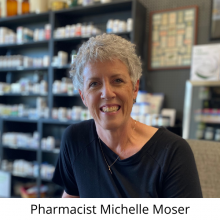What is the history and primary use of Low Dose Naltrexone (LDN)?
Naltrexone is a medication that was FDA approved in the U.S. back in 1964. It was originally used for and continues to be used for alcohol overuse syndrome and as well as methadone withdrawal, et cetera.
That's usually in a typical 50 to a 300 milligram. But over the last 40 years or so, there has been more research done where we find that Naltrexone, when provided in very small doses, acts like a very different kind of drug.
That is called hormesis, where an upper -end dose looks different and acts different than a lower- end dose. So what we found over the last 40 years is whether we're using ultra-low dose, which is microgram dosing, very low dose which is 0.1 milligram to 0 .25 milli gram dossing, or low-dose, which is anywhere from 0.1 mg to about 6, maybe even 9 mg.
What we found is that when we individualize these doses, we find much greater success. And so what I mean by that is that a lot of the studies done sometimes even 20 some years ago, they were using doses of 1 .5, going up to three, going to 4.50. And that captured about a 50% success rate. So, Low Dose Naltrexone is primarily used to help reduce inflammation in the body. So all disease is rooted in inflammation, right? So, whether we're dealing with an autoimmune disease or we are dealing with even cancer, it's even thought that some co-infections like Epstein-Barr virus or long COVID, also produce inflammation in the body as well.
So we can use Low Dose Naltrexone, very Low Dose Naltrexone or Ultra Low Dose Naltrexone, in very specific patient populations to help to kind of damp that down. And then through that, we find less inflammation and a wide variety of other areas being helped.
When we use Low Dose Naltrexone, we do see blockade of the opiate receptors as well. So we have to be careful if someone is using opiates or synthetic medications, pain medications for chronic pain use.
What we've found, especially in more recent years, is that we don't have to use a lot of Naltrexone to get good blockade of pain receptors. Sometimes we can use 0 .1 milligram, which is 100 micrograms, and we use that anywhere from one to four times a day, which sounds a little bit different than what we've seen in the literature.
But what Dr. Norman Marcus, from the Norman-Marcus Pain Institute, actually showed us last year at the LDN conference, is that his patient population is doing very well, whether their chronic pain is due to an injury or due to an autoimmune disease, he's finding that when he looks at that individual, supports an individual with other medications as well, he could actually go after that kind of pain and he gets much greater success with that.
So we use Low Dose Naltrexone specifically for autoimmune diseases to reduce inflammation in the body and to modulate the immune system. So modulating the system means that we are not exciting the immune system and we're not suppressing the immune system. What we know is that LDN, at different doses, has more of an affinity to suppress the system when we start getting up into higher levels but we can use that to our advantage in a wide variety of disease states.
We have recently seen a lot of work with LDN and cancer. So, we have to date about 930 to 950 published scientific papers and case study on Low Dose Naltrexone. I've been a pharmacist now for 37 years and I have yet to find another medication that is studied so well.
I literally don't know of another medication that has that many case studies and scientific papers written on it. But yet, this medication is not commercially available in low doses because of how it works in a variety of disease states.
It would be very difficult for a manufacturer to do that. So we're happy to compound this so that we can individualize dosing along with patient follow -up to ensure that patients are really well taken care of.
And a lot of time when pharmacies have those patient outcome follow -up processes in place, it really takes a burden off of the prescriber in the prescriber's office, so that the patient isn't constantly either emailing them or calling in asking questions.
The pharmacies can lend a hand in helping with that heavy lift.








